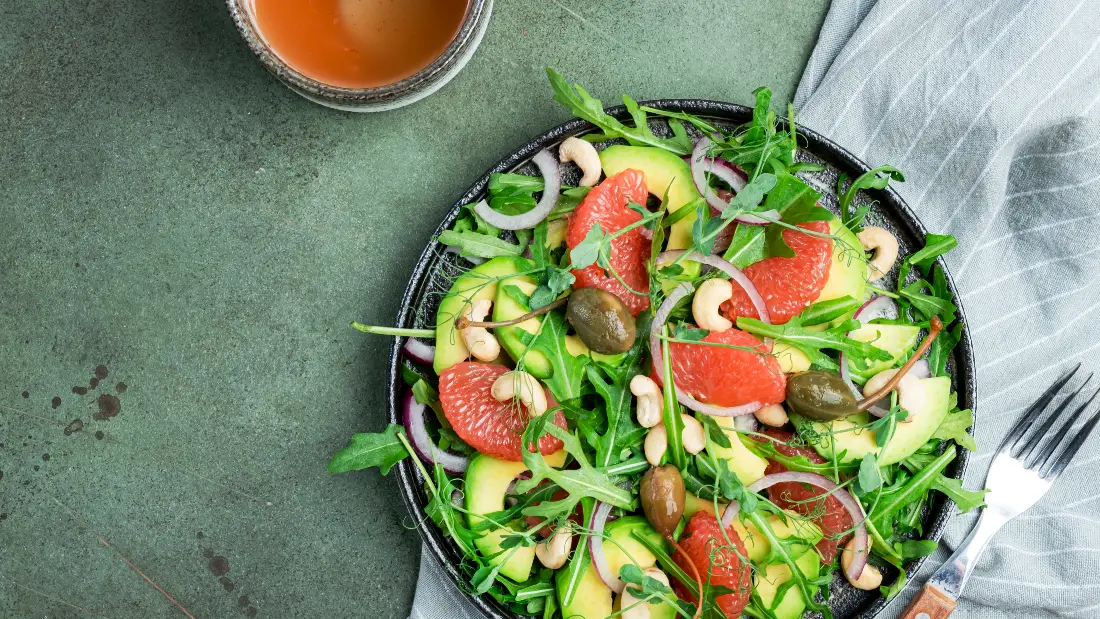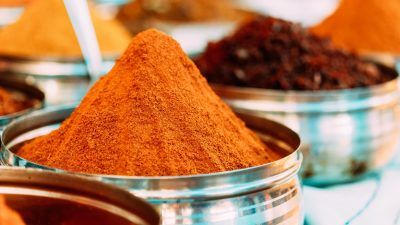7 powerful food pairings for optimal health

If you’re eating a wholefood plant-based diet, you’ve already chosen the best diet for your health, the animal and the planet. But if you’re feeling ready to level up your plate to really squeeze every bit of nutritional value from your food, you might want to embrace “food synergy”. Food synergy means that certain foods paired together give you superior nutrient absorption than if the foods were to be eaten separately. So, here are eight food pairings to help you get the most out of your food.
1. Green tea and lemon
Green tea is bursting with goodness. It contains antioxidants called catechins, such as epigallocatechin gallate (EGCG), which have many proven health benefits. Studies have shown that EGCG has anti-cancer properties, can reduce inflammation, protect the nervous system and promote bone health. It has also been shown to lessen anxiety, improve mood, brain function and memory. But to get the most from these catechins it may be worth adding a slice of lemon to your tea, as it improves the absorption of these powerful polyphenols.
2. Non-haem iron and vitamin C
Many people fear that they won’t get enough iron when they go vegetarian or vegan because it is a mineral usually associated with red meat (haem iron). However, this is actually a myth and a healthy, varied vegan diet contains all the plant-based iron (non-haem iron) that you need. In fact, the European Prospective Investigation into Cancer and Nutrition (EPIC) Oxford study found that vegans had the highest intake of iron!
The best plant sources of iron include wholegrains, fortified breakfast cereals, pulses, seeds, dried fruit, seaweed (nori) and dark green leafy vegetables. To make sure you absorb enough iron, it is best to combine it with a source of vitamin C as it has long-been known that ascorbic acid (vitamin C), improves our ability to absorb non-haem iron from our food. Luckily, vitamin C is ubiquitous in a healthy plant-based diet and can be found in citrus fruit, berries, peppers, broccoli and even potato.
3. Tomato and avocado
The main tomato powerhouse is lycopene – a red pigment that is a strong antioxidant that has been linked to many health benefits, including reducing the risk of heart disease and cancer, and improving sleep quality. It was hypothesised that we needed a source of dietary fat to properly absorb the lycopene in tomatoes and so researchers put this to the test. They found that by eating tomato salsa with some avocado, lycopene absorption increased by over four times! Thankfully tomato and avocado is a match made in heaven so make sure you enjoy them together in a salad, as part of your vegan full English breakfast, or in a chilli or burrito.
4. Healthy fat and fat-soluble vitamins
As is the case with tomatoes and avocados, many vitamins are fat-soluble meaning they are best absorbed when eaten with a source of fat. These include vitamins A, D, E and K. It is therefore best to ensure you include a source of healthy, unsaturated fat with your meals. You don’t need much, just a few grams. Luckily this can be easily done by adding a drizzle of olive oil or a sprinkling of seeds and nuts to a leafy salad, accompanying a vegan chilli with guacamole, or a dollop of nut butter to your fortified soya milk smoothie.
5. Turmeric and black pepper
A golden spice with a myriad of health benefits, turmeric is a true example of medicinal food. The key compound in turmeric is called curcumin – a very strong antioxidant with anti-inflammatory properties. On top of being a powerful antioxidant, curcumin also stimulates your body’s own defences and antioxidant compounds, making them more effective. Turmeric has been shown to improve inflammatory bowel conditions such as Crohn’s, IBS or ulcerative colitis, has cancer-inhibiting properties, can protect the heart from a build-up of cholesterol and may even reduce the symptoms of depression and improve mood.
A big problem is that it’s hard to get enough curcumin from the powder or root alone – even if you use it liberally. But there is a smart solution – always combine it with black pepper. Black pepper contains piperine, which increases our absorption of curcumin by up to 2,000 per cent! Many turmeric supplements contain piperine but it’s good to follow this rule in the kitchen too.
6. Protein with healthy carbohydrates
After we eat, our body breaks down the carbohydrates and turns them into glucose to be used as energy by our cells. As the glucose moves into our bloodstream, our blood-glucose levels rise. This is a totally normal – and essential – mechanism. However, eating refined carbohydrates such as sweets, white rice and bread, can cause sudden huge spikes in blood-glucose.
Although it is normal for blood-sugar levels to rise after a meal, it is best to avoid sharp or frequent rises as these can lead to long term adverse health effects. To combat this, we can combine healthy carbohydrates with foods rich in protein and fibre such as beans. Fibre and protein slow down the absorption of sugar into the blood, resulting in a more gradual and manageable rise in blood-sugar.
7. Vitamin D and calcium
Having adequate levels of vitamin D is essential for absorbing enough calcium from our food. When we have inadequate levels of vitamin D, we only absorb 10 to 15 per cent of dietary calcium. Our main natural source of vitamin D is the sun but it is extremely difficult to get enough sunlight during autumn and winter if you live in the northern hemisphere. This is why Viva! recommends everyone should consider taking a supplement.
Of course, you can also obtain vitamin D from fortified foods such as dairy-free milks and yoghurts, breakfast cereals and mushrooms grown under UV light (check the label). So, by ensuring you getting enough vitamin D and consuming foods high in calcium such as kale, calcium-set tofu and dried apricots, you will be doing right by your bones. And although you don’t need to eat them at the same time (so there is no need to mix kale in with your soya yoghurt), many plant-based dairy alternatives are fortified with both calcium and vitamin D so you can feed two birds with one scone.
Many of the double acts above complement each other naturally so you may find you’re already doing many of them, especially if your diet is rich in whole plant foods. But if not, here’s your chance to embrace these powerful pairs.







